#also 'boldly go animated' probably should have been in there for the original animated series
Explore tagged Tumblr posts
Text
• boldly go trippin’ on shrooms • boldly go out of retirement • boldly go lower • boldly pre-go • boldly go younger • boldly go to school (soon™)
Ah, yes, the various Star Trek shows
boldly go
boldly go again
boldly go nowhere in particular
boldly go TOO FAR
boldly go the first time
#star trek#star trek discovery#star trek picard#star trek lower decks#star trek brave new worlds#star trek prodigy#star trek starfleet academy#are we there yet#i will turn this trek around right now#why is it always boldly going#why never italicly going#also 'boldly go animated' probably should have been in there for the original animated series#but i didn't want to confuse it with lower decks#also i've never watched the original animated series#i always wanted to watch one of the others more
8K notes
·
View notes
Note
hii, i want to get into star trek but i dont know where to start
Do you have a particular episode or series you recommend for newbies?
Star Trek: Lower Decks is a pretty good way to get into the series imo. It will introduce you to a lot of the concepts of the series, but with a different style and tone. There's a lot of references to the rest of the franchise, but to those who have only seen lower decks they mostly read as just worldbuilding to make the world seem larger than just one ship.
If you want to know what Star Trek is really like as a whole, I recommend checking out Star Trek: The Next Generation, season one episode one, Encounter at Farpoint. It's not the best Star Trek episode, but it introduces the characters of TNG and some series-long plot arcs, and its plot is pretty typical of the kind of high-concept science fiction the franchise is known for.
Most of the series was designed for syndication in a pre-streaming environment where you don't need to watch it in order if you don't want to. You can kind of skip around if you want. One valid way of watching star trek is just to watch all the pilot episodes of the pre-streaming Trek (to get to know the characters and the premise) and then skip around within each series.
All of the modern star trek shows made for streaming should be watched in order, and Star Trek Deep Space Nine absolutely should be watched in order. DS9 also has the best pilot episode. And is probably the best series; although I feel like it's best enjoyed when you already have a familiarity with this universe through watching other star trek.
appendix: description of the premise of each star trek series, in order of release date.
TOS: Star Trek (1966-1969). Also known as Star Trek (The Original Series). The show follows the first three years out of the five year mission of the United Federation of Planets starship Enterprise under command of Captain Kirk and his science officer Commander Spock, and the doctor "Bones" McCoy, to explore strange new worlds. To seek out new life, and new civilizations. To boldly go where no man has gone before!
TAS: Star Trek: the Animated Series (1973-1974). A cartoon in the animation style/quality of the likes of Scooby Doo. The show follows the final two years of the five year mission, but very quirky and even lower budget.
Star Trek movies 1-6 (1979-1991) continue the story of Kirk, Spock, McCoy, and the crew of the Enterprise. People say the odd numbered movies are worse, but I like all of them. Star Trek IV (the one with the whales) is easily the best one--it's a movie in the style of some of the more 'hijinksy' episodes of TOS.
TNG: Star Trek: The Next Generation. (1987-1994). Nearly 100 years after Kirk's Enterprise, Jean-Luc Picard commands the Enterprise-D, an almost city-sized starship going even further and faster than before, with advanced tech like matter replicators and holodeck simulator rooms. His crew includes an empath, an android, a blind pilot with an accessibility aid, starfleet's first Klingon, and idk i guess a couple of regular humans I guess.
DS9: Star Trek: Deep Space Nine (1993-1999). Commander Sisko begrudgingly takes command of a run down space station that had been built as a slave camp during the lizard-nazi occupation of the previously peaceful and spiritual Bajor. The occupation is over and the station now belongs to the Bajorans under Starfleet administration. His second officer is a Bajoran terrorist. The rest of the crew includes the cringiest best doctor in starfleet, a trans woman with a worm in her belly, a slime cop, and a cutthroat capitalist running the station's bar. And who can forget O'brien, the former transporter chief of the Enterprise-D and the Most Normal Guy In The Universe. Things get complicated when, in episode one, a uniquely stable wormhole to the other side of the galaxy opens up, and suddenly this backwater becomes a bustling frontier.
VOY: Star Trek Voyager (1995-2001). A state-of-the-art but otherwise pretty unremarkable starship, Voyager, sets out from DS9 on a quick mission to capture some (mostly human) rebels/terrorists. However, both the terrorist ship and Voyager get transported to the other side of the galaxy (not the same side as the wormhole from DS9, although that would be convenient). Facing a 70 year return trip, they must learn to work together to survive in a harsh part of the galaxy. And if they do a little exploration of strange new worlds while they're at it, that's fine too. Captain Janeway commands her intrepid crew of humans, aliens; terrorists and by-the-books officers. there's also a really cool ex-zombie-cyborg with autism but she doesn't appear until like season 4. Also a brilliant holographic doctor who isn't pleased about the fact that he can be turned on and off at the flick of a switch.
Star Trek movies 7-10 (1994-2002) are the The Next Generation tie-ins. Generations is kinda bad, First Contact is the best one.
ENT: Enterprise (later Star Trek: Enterprise) (2001-2005). 100 years before Kirk's Enterprise, Earth is a client state of the Vulcans, and humans are tiring of the Vulcans' watchful eye. After a diplomatic incident, Captain Archer commands the 'first' Enterprise, the NX-01, on humanity's very first deep-space expedition. Though he'd be a LOT happier if the Vulcans hadn't insisted upon putting a Vulcan Science Officer on the bridge. Phlox, the alien doctor, is one of Star Trek's best characters. Trip, the chief engineer and certified Florida man, is also a delight.
Star Trek movies 11-13 (2009-2016) are the alternate universe "Kelvin Timeline" movies, which take place in a more action-oriented, star-wars-like version of the The Original Series time period. Kirk, Spock, and McCoy are back, but played by younger actors. Star Trek (2009) is kind of okay if you like action movies that have nothing to do with what Star Trek is actually about, Into Darkness is kind of bad, and Star Trek Beyond was actually delightful.
side note: the Kelvin Timeline movies are often considered a "reboot," but they're arguably less of a reboot than the Discovery/Strange New Worlds timeline, since there is an in-universe REASON for the kelvin timeline to exist parallel to the television timeline; whereas DSC & SNW just rewrite history and visual design for no reason and expect us to believe it was always this way despite previous callbacks to the TOS era in the franchise generally being faithful to the events and appearance of the original series itself.
DIS (DSC): Star Trek: Discovery (2017-). First in a franchise soft-reboot. The visuals are all different, and though they have tried to imply it's the same universe/timeline/continuity as everything that came before… it is best interpreted as a reboot in a slightly different timeline. The story of a federation starship with a top-secret mushroom-powered teleportation drive, just a decade before Kirk's Enterprise. Or the story of how starfleet's first mutineer learned to trust other people. I don't like this one very much so it's possible im mischaracterizing it.
PIC: Star Trek Picard. (2020-). A Character Study on the elderly Jean-Luc Picard, as he goes on a quest to find the daughter of his late android friend before something terrible happens to her. This one is horrifically violent for some reason and is also horrifyingly ableist in season 2. Season 3 will be a sort of The Next Generation Cast Reunion.
LOW: Star Trek: Lower Decks (2020-). An adult-style cartoon which reimagines Star Trek as a workplace sitcom. On one of Starfleet's low-tier workhorse starships, the U.S.S. Cerritos, on the lower decks, are four nerds who love their jobs (one of them would never admit it though and would be offended if you called her a nerd.) Bradward Boimler, the rule-follower, Beckett Mariner, the badass free-spirit who is clearly suffering from burnout, D'vana Tendi, the delightfully optimistic nurse and scientist, and Samanthan Rutherford, the cyborg engineer who loves crawlin' around in the tubes! This one is sort of star trek self-parody, but in a good way. I love most Star Trek, but as different as this one is, it's my favorite.
PRODIGY: Star Trek: Prodigy (2021-). A 3D-animated cartoon (for all ages, this time). Four alien teenagers, a large alien child, and some kind of goo monster, steal an incredibly fast prototype federation starship, the Protostar. Now, none of them have ever actually heard of the Federation, or… know how to pilot a starship, but they are guided through it by a hologram based on Voyager's Captain Janeway. It starts with a very Star Wars-like tone and gradually shifts to being more and more like Star Trek as the season progresses--which makes sense in the context of the story. SNW: Star Trek: Strange New Worlds (2022-). A soft reboot of TOS based on Captain Pike's appearance in Discovery. (Pike was the captain of the Enterprise just before Kirk was, in the TOS episodes The Cage and The Menagerie). This one has some pretty bad ableism in it, but it's not as overt as PIC's. This one really is just, like, as close to "more of regular star trek" as it gets. Though the tone does feel very different to Star Trek TOS and TNG.
11 notes
·
View notes
Text

So I guess it’s that time of day where I get up on my soap box to once again talk about the incongruities and gaping chasms in the Netflixvania plot that have yet to be addressed, specifically those that strengthen the case for why shoehorning Leon into this mess divorced of his supporting cast and story is probably a Bad Idea.
TL;DR I am perpetually tortured by the fact nothing makes sense right now so I am going to whinge exhaustively in a post to exorcise myself of misery and potentially spare my poor friend’s ears.
So. The show’s version of the origin story has not been properly detailed in any meaningful length except for the fact that a) Leon is indeed the patriarch of the Belmont family and b) he entered Wallachia specifically to hunt for Dracula. Sounds like the same story beats from LoI at face value, but just like everything else about this house of cards, it completely falls apart under the faintest bit of scrutiny. I’ve beat the dead horse of Mathias no longer being canon enough as it is, but Mathias is arguably the most pivotal character in the entire story. You cannot make a Castlevania adaptation that excludes his history and expect it to make actual sense. If you remove Mathias, you dismantle every facet of the plot in one fell swoop, especially if you’re going to try and wedge Leon Belmont into your story without him. The two are mutually exclusive, you cannot have one without the other unless you completely rewrite the canon to follow a wholly different trajectory that is free of those trappings (i.e Lords of Shadow, which I do not like, but I appreciate that it was trying to do something totally different and therefore don’t take great issue with it.)
And I would have accepted this level of reimagining was the show’s intention, if Leon wasn’t paid such a heaping dose of aggressive lip service to indisputably assert him as this universe’s Belmont patriarch as well. But put in context with the rest Ellis’ interpretation as is, this just ends up making no God damn sense.
Dracula has been explicitly stated to be the first vampire to exist in this universe. That solidly affirms that Mathias is not canon, so therefore Leon’s history with him is also non existent. So in turn, that logically means Walter Bernhard also never existed, Mathias never hatched that elaborate plot with him to betray Leon, Sara was never kidnapped, Leon never had to rescue her, she was never bitten by Walter, her soul was never sacrificed to make the Vampire Killer. So what did happen, then? If Dracula was never Mathias, then what the fuck was he up to in the 11th century? Getting his distance mirror apparently, which he made an oddly specific point of mentioning he acquired 400 years prior to the events of season two, which would have been approximately 1075. This would leave us 19 years prior to Lament of Innocence, so presumably Dracula was already a vampire when Leon was just a child. Which in itself just more effectively dispatches any expectations of their history together being the same or even just similar to what it was in LoI.
Albeit, Trevor treats us to some pretty loaded exposition in saying that the Belmont family hailed from France, moving to Wallachia when “the dark things all moved into the east”--followed by Alucard affirming that Leon was in Wallachia looking specifically for Dracula. So Dracula and his monsters were obviously in France at some point in this canon causing a stink that attracted Leon’s notice--we also have evidence of this with one of the storyboard artists drawing Leon in his knightly garb slaying said monsters. But if Dracula was never Mathias in Ellis’ interpretation, what was he even doing dicking around in France in the first place? And furthermore, what did he do to convince Leon to chase him into the east as well as devote his life and the life of every Belmont after him to killing Dracula specifically? Because it’s gonna be a pretty weak downgrade in motivation from the original story if he just wants to kill Dracula because Vampires Are Evil ™, or Dracula just offhandedly killed someone important to him without nary a drop of history behind them to give it weight.
Also another discrepancy between these two canons is Leon is still a knight when he goes into the east whereas he gave up his knighthood in the games; this is quite boldly showcased by his depiction in that big ass painting as well as the fact his sword is present in the Belmont hold--which is also coincidentally the thing that kills Dracula, not the Vampire Killer. And oh yeah, how the fuck is the Vampire Killer here if the whole plot behind its existence has been effectively erased? I repeat, it’s going to be a weak downgrade if it came from anything less than the tragedy of Sara Trantoul’s sacrifice--which its starting to seem like it will be, based on everything else that’s been exorcised from the show canon.
There’s just no sensible way to knit these two interpretations together at this point if Ellis is going to dig in his heels and maintain that Dracula’s history as Mathias is not part of his vision, so I really can’t say I’m sure what in God’s name he’s going to inject into the story to fill this gaping hole he’s gnawed into the canon. I strongly believe Leon should just have been quietly excluded if the most vital elements of his story have been erased along with Mathias as well. I would not be here complaining about this at all if Leon hadn’t been forced into this version of Castlevania unnecessarily, which then just opened up a black hole of inconsistencies. Why even add him? Why have your main cast keep talking about him? Why sprinkle in fresh lore about him? Why make his sword the thing that kills Dracula? Why do all this if he’s going to be either a non-entity in the future of the show, or you’re going to just ignore the entirety of the canon that he is inextricably attached to?
This is why I’m kind of in a purgatorial relationship with the show right now as we wait for season three; I have no idea if there’s going to be even a molecule of exposition showing off the “New and Improved” vision for Leon’s and Dracula’s backstory--a part of me finds their constant chatter about Leon a little too heavy-handed for his character and history to just be swept under the rug thereafter, but another part of me is pretty solidly convinced the show isn’t even going to attempt to address that elephant in the room from here.
However, if Alucard’s going to be left by his lonesome with nothing but his father’s castle and the Belmont library, then he better be busting his ass down there reading up on some Belmont family history. Because honestly? There really is no other purpose his character can serve when isolated from the rest of the cast, the action and the plot, besides acting as a vehicle for exposition. I’d like to believe that this was the intention behind that very sudden and very off-handed plot point of Trevor bestowing his family’s library upon him in season 2. Why else do that and then just leave him there? If Alucard is just going to be steered back into the fray early into the new season, then what was even the point of having the team go their separate ways?
Anyways. I’ve said before I really wouldn’t mind if the staff decided to rewrite Dracula and Leon’s history together a little due to the bizarre and convoluted nature of LoI’s plot which definitely needs a fresh coat of paint, and I still maintain that; but they seem to be both borrowing the outline of the premise while erasing the primary facets that made it work, and I’m entirely confused about how they’re going to actualise such a shaky narrative structure. Not very well, judging by this janky mess of plotholes they’ve dug for themselves--if they don’t just conveniently forget to ever address it again, I’m half sure their answers to these questions are going to be some wacky nonsense that probably even further diminishes the symbolic importance of the story as a whole.
If the show completely erases any meaningful relationship between Dracula and Leon as well as the gravity behind the Vampire Killer’s origins, then it will have truly sunk to a whole new depth. These are the only things I am begging Ellis not to fuck up. You know, the entire crux of Castlevania’s plot as we know it, and the entire reason this story is even playing out in this universe the way it is.
There’s no shortage of us already frustrated with his treatment of the canon as it is, and its a damn shame. I really like a lot of things about the show. The animation is still gorgeous, the music is wonderful, the atmosphere is great, and I felt genuinely moved by some of the scenes they curated for us. I appreciate the hard work the team as a whole has poured into it in the limited time frame they have to complete every season. There’s no taking away from the fact that the show has value in many areas. But Ellis to date has sadly cocked up more facets of the story than he has improved, which is what is consistently holding the show back. As much as I crave answers from this series though, I’m equally as afraid that I am not going to like them when I get them. Or that Leon’s character is going to get dragged backwards through a thorn-bush should he ever appear in the flesh.
I would love nothing more than season three to blow me away and restore my faith in the future of the series but at this point, I’d honestly settle for a few minutes of icon material and whatever answers there are so I can finally leave this bespoke Silent Hill Ellis’ writing has crafted for me, amen and good night.
#⚜ :: OOC┊Person of Sinterest#{sin complains; the thrilling novel you didnt know you needed}#{you dont need it LMAO BUT I HAVE TO SCREAM INTO THE VOID BC THIS IS DRIVING ME INSANE}#{u know that conspiracy theory meme from always sunny thats me}#{s3 or any consequent seasons will probably never answer my questions tbh ill just have to live here in this hell forever}#{also god damn please just release season 2's ost so i can enjoy that if nothing else}#{i hope s3 airs on my birthday so i can just really be kicked in the balls}
7 notes
·
View notes
Text
Ranking : Top Films of 2018
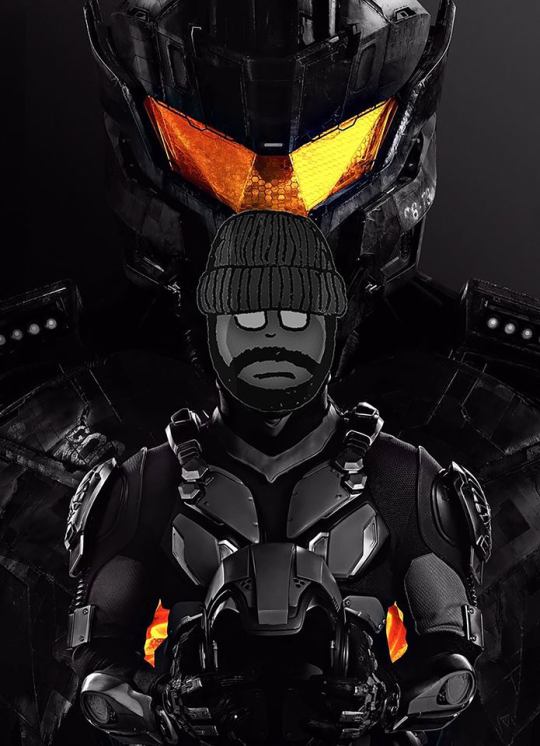
Here we are... that moment that every critic simultaneously loves and dreads : the Year-End Top 10 List. At worst, we are forced to scrape the creative dredges and cobble together something that resembles a best of list that will bring glory and honor to the year. At best (like this year), we are forced to leave personal favorites in the dust and judge the larger quantity of offerings on a much tougher scale in order to truly represent the top quality work of the year.
As I’ve said in many pieces this year, 2018 was a joy in terms of being a film-lover. This list was not an easy undertaking, and it more so resembles a snapshot of how I’ve felt over a judging period than it does a concrete group of selections in a fixed order. Take this list as more of a jumping off point for discovery than you do the gospel of DOOMonFILM.
Note : I am not sure when I will get a chance to see Vice or The Favourite, which I am sure will skew my results once I do see them... I will address those films in their respective reviews, however. Forgive me in advance.
Honorable Mentions
Damsel Even if the Zellner Brothers weren’t representing Austin beautifully with this gem of a film, it’d still be on my radar simply for the fact that it is a unique twist on a genre that most figured had seen every presentation imaginable. Add to that a strong female lead character, and you’ve got a winner on your hands.
The Endless A science-fiction modern day classic, and apparently part of a possibly bigger line of stories (with some of the best integration of aspects from another film I’ve ever seen). This film is chilling in its approach to the concept of cults, as well as its use of the concept of ‘the danger that lurks just off-screen’.
Isle of Dogs Had this year not been full of stellar animated films, this one probably would have made the main list. More groundbreaking animated films, combined with personal feelings about the films of Wes Anderson, however, regulated this one to Honorable Mention status.
Mid90s I was all set for Eighth Grade to be my bit of nostalgia, or my reflection on what it’s like to be a kid again, and for what it’s worth, it was a great film. The thing is, Mid90s directly spoke to me in a way that Eighth Grade unfortunately could not, simply because Mid90s was like looking in a time-traveling mirror.
Thoroughbreds I really wanted this to be on my top 10, but ultimately, it was too ‘quiet’ of a film to make it in a year full of big noise. Thoroughbreds will certainly be a future favorite for public screenings and friend viewings, but a couple of films this year hit the same notes on a higher frequency.
Black Panther The cultural impact of this film is one that cannot be ignored. It took February, a month that is generally a box office bust, and it put up unparalleled numbers that not only lasted throughout the year, but were topped from within rather than by another Hollywood studio. The respect given to the characters and their African heritage did not go unnoticed, either, as several think-pieces and a number of curriculum were spawned from those researching elements of the production design. The narrative is strong, and it righted the Marvel villain boat prior to the big MCU bombshell that was lying in wait.
The Favourite I really wanted this to make the top 10 of the year... I thought long and hard about what film I should remove or replace. What I came to realize, however, is that despite The Favourite being a world-class comedy and production, it simply falls short in the realm of the spectacular : it does not contain visual innovations, it is not a reflection of the times, and it didn’t completely break my brain. That being said, on any given day, I’d happily name this one of the top 10 films of 2018... it’s essentially like having 11 cakes on the table and having to pick the 10 best.
Avengers : Infinity War This movie was the true film event of the year. Marvel has been building up to this singular event for nearly two decades, and in my opinion, the payoff more than succeeded. Thanos tiptoed the line between anti-hero and villain with purpose perfectly, and the rapport between characters worked both in terms of advancing narratives and being mined for humor. I am definitely looking forward to Avengers : Endgame this April, and I know the masses are right there with me.
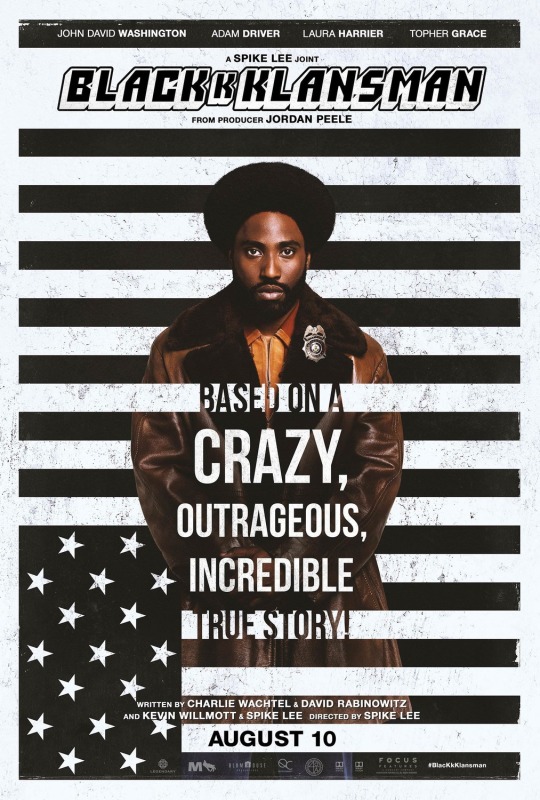
10. BlacKkKlansman
Not that I ever doubted Spike Lee had it, but after a few abstract offerings and documentaries, one wonders if their style can translate into an ever-expanding world of film language. Luckily for Lee, it seems the world has grown into his cinematic vision, with an older true story serving as the perfect backbone for many of Lee’s trademark tricks to be implemented for maximum effect. The ending will put you in tears if you have anything closely resembling a soul.
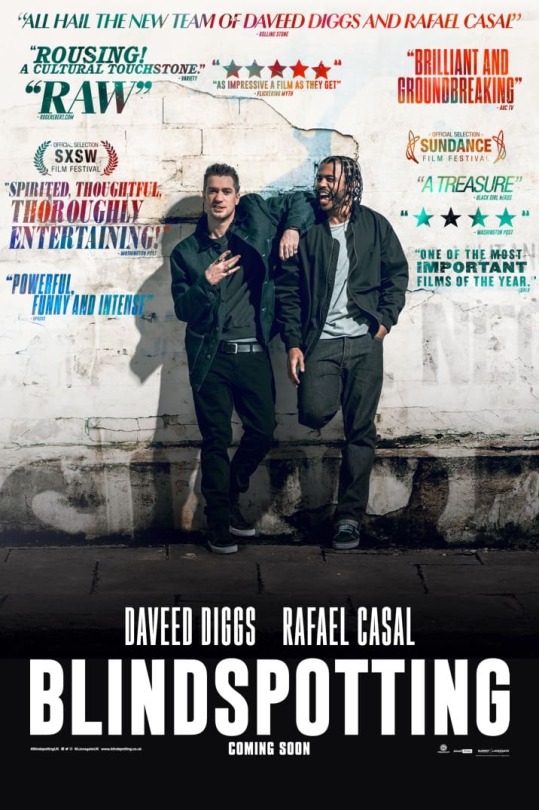
9. Blindspotting
This film really deserved a bigger run than it got, as it hit race relations of today on the nose without coming off as preachy or heavy-handed. Daveed Diggs proved that his charisma translated on both stage and screen, and his integration of hip-hop into both realms will hopefully have positive long-lasting effects. The chemistry between all members of this cast is kinetic, the story is told with perfect pacing, and the movie rides visual highs that match the narrative ones. I would love to see this movie receive some high-degree nominations.
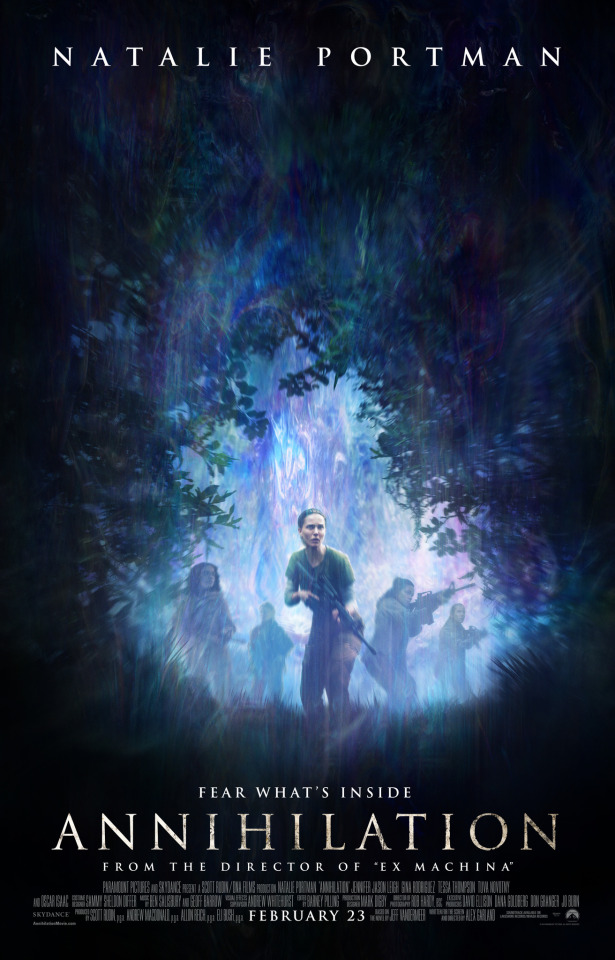
8. Annihilation
I came into 2018 with high expectations for this film, as I’d spent the previous 16 months or so completing the Southern Reach trilogy in its book form. Then I started hearing things about the production and the release that gave me a bad feeling : a Netflix distribution deal that seemed to all but kill a true theatrical run, trepidation from the studio in regards to the director’s vision, and other whispers that attempt to sink a film. Then I saw this movie, and was taken away to a completely different world. We may not be getting a faithful, trilogy-length adaptation of the series anymore based on what happens in Annihilation, but if these are the moments I’m left with, I’d consider myself happy in the long run.
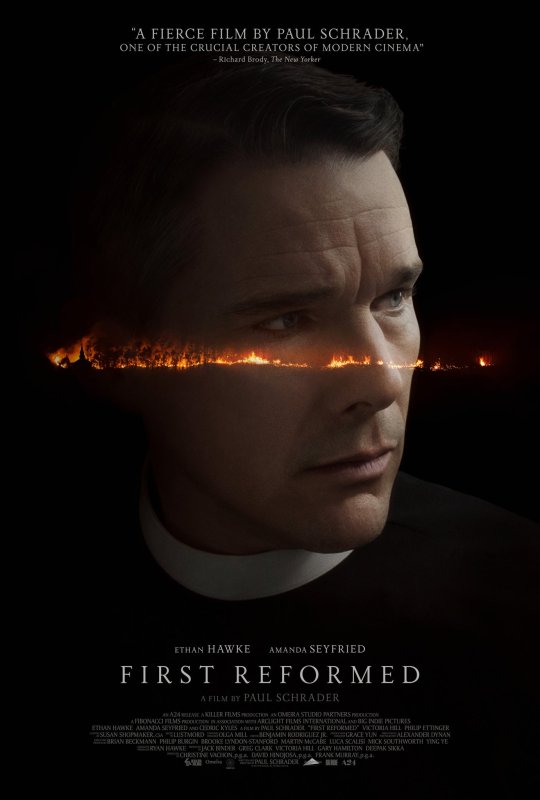
7. First Reformed
It took me longer than I intended to get around to this one, but knowing that Paul Schrader wrote and directed it made it a must-see. The film was drawing comparisons to Taxi Driver (not a surprise, based on the aforementioned Schrader involvement), and surprisingly, it more than lived up to that hype. The tension is equal, but updated to reflect the times in a way that could impact any of us.
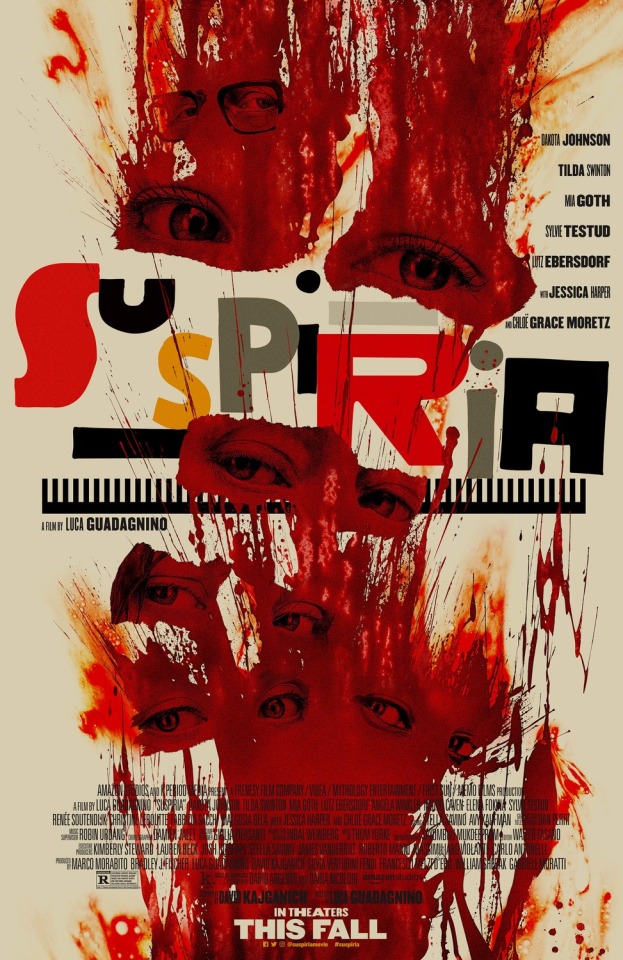
6. Suspiria
This movie will make it extremely hard for me to blanket-debate against remakes simply because it does all of the right things in regards to updating a classic. The film does not rely on existence as a new millenium version of an old film... rather, it boldly takes concepts only touched upon in the original and fully embraces them, presenting a true psychological horror gem in a year full of them. The film also looks amazing on top of everything, which was a high bar to meet considering the original movie is basically driven by its visual style. A 2018 must-see, film buff or not.
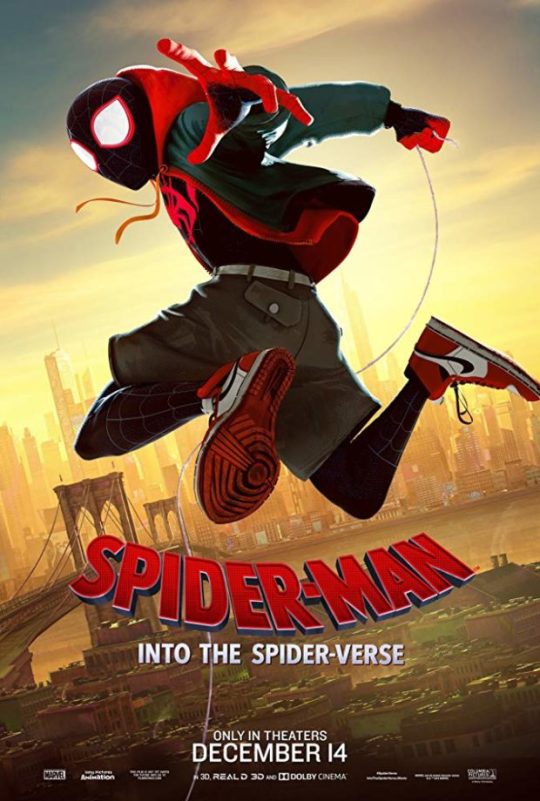
5. Spiderman : Into the Spider-Verse
Easily the most fun I’ve had in a theater all year. I was blown away by the animation, and can’t wait to see further installments of the Spider-verse specifically to see how that enhances over the years. There was such a high volume of homage and Easter Egg placement in this film that it warrants repeat viewings, and it was one of a handful of films that I wanted to instantly own as I was walking out of the theater.
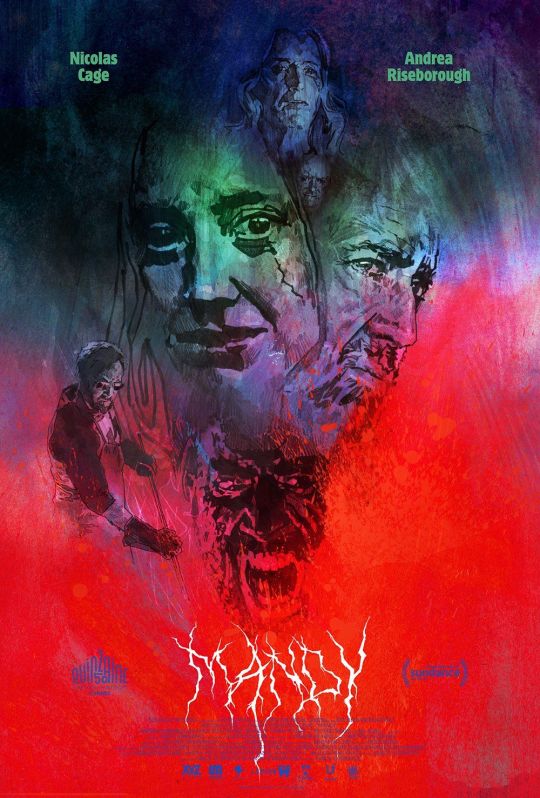
4. Mandy
Like Spider-Man : Into the Spider-verse, I wanted to own this movie the second I walked out of the theater as well. The trailers intrigued me, a recommendation of Beyond the Black Rainbow fully sold me, and the final product did not disappoint. This film certainly is not for everyone, and funny enough, the two biggest aspects that would place it on that ‘not for everyone’ list sit in opposition of one another : the film is a bit indulgent on the style at the sake of what would be considered normal pacing, and it has some extremely violent moments. That being said, Mandy is easily one of, if not THE, most beautiful films of the year.

3. Roma
This seems like the closest thing to a Fellini film that us modern day film lovers will ever get. The story itself is intriguing, as it juxtaposes class issues, political issues and the barrier of trying to raise a family in a crazy world all in an intriguing tapestry. The cinematography is calculated, observational, and the choice to film the movie in black and white adds an instant timeless quality to it. Director Alfonso Cuaron even manages to get in a little cinematic and visual humor, albeit mostly subtly, but it definitely pays off if you’re in tune to what he’s doing. Easily one of the best pictures of the year, worldwide, and a party that I was certainly late to.
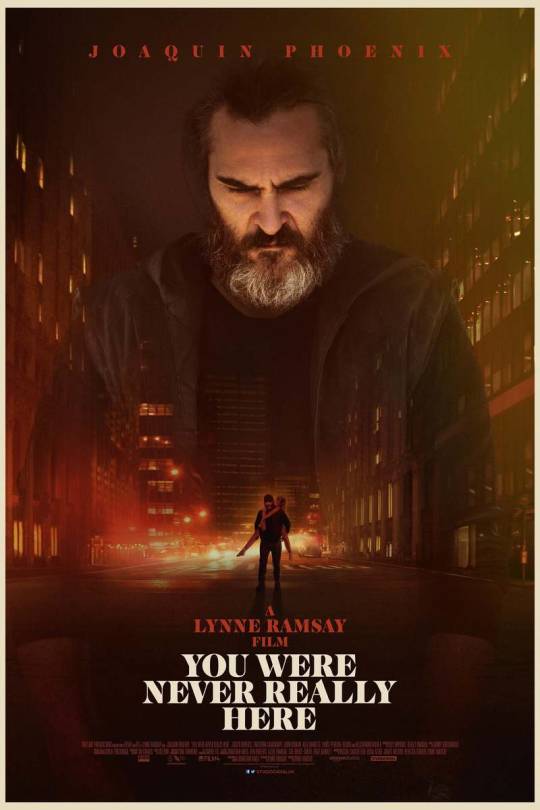
2. You Were Never Really Here
If Mandy is a bit too over the top for your tastes, then You Were Never Really Here may be the jarring experience you need in 2018. This film is almost as visually stunning, but the narrative is far more calculating, deceptive and intriguing, both on the surface and as you dig deeper. The hectic camera setups, editing and score put you in such a disjointed state of mind that Joaquin Phoenix becomes the only thing you can hang on to, and your involvement in his journey is completely immersive. In a year of performances that focus on the anti-hero, this film found a way to scrape to the top of the pile.
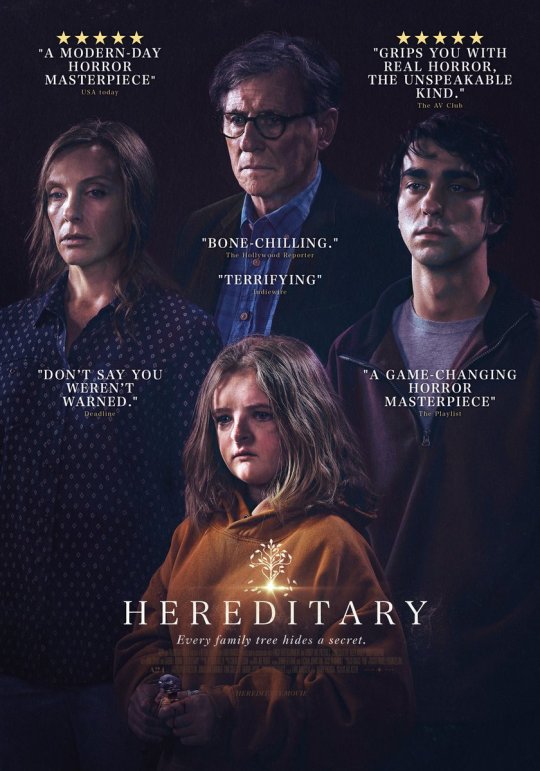
1. Hereditary
Something strange is happening here... who would have thought that a horror film would be my favorite film of the year? Hereditary is no run of the mill horror film, however... it treats its audience as intelligent, and there is so much texture in the film that it’s impossible to see it all without multiple viewings. The close of the first third of the film is horribly unsettling, but it propels the narrative forward so abruptly and intensely that you’re locked in from there out. A genius film, and an instant classic.
(Editor’s notes)
- Original post date : 12/27/18 - Revision date : 1/8/19 (Roma added to position 3, Black Panther moved to Honorable Mentions) - Revision date : 1/10/19 (The Favourite added to Honorable Mentions) - Revision date : 1/22/19 (Suspiria added to position 6,Avengers : Infinity War moved to Honorable Mentions)
#ChiefDoomsday#DOOMonFILM#TopFilms2018#Damsel#TheEndless#IsleOfDogs#Mid90s#Thoroughbreds#BlackPanther#BlacKkKlansman#Blindspotting#AvengersInfinityWar#Annihilation#FirstReformed#Spider-ManIntoTheSpider-Verse#Mandy#YouWereNeverReallyHere#Hereditary
11 notes
·
View notes
Note
Top 10 (or 5) most badass Disney Princes in your opinion?
I’m gonna do Top 5 so that I can explain my choices. Also gonna go from 5-1 if that’s okay.Alright!
#5. Anna from Frozen: Most would probably say Elsa, but I can’t agree. Look back at what Anna had to do. She finds out in one day that her sister had these powerful ice powers and watches her run away. She found this out after both having her memory of it wiped years earlier, and having tried for YEARS to connect to her sister and getting pushed away for, as far as she knew, no reason. So what did she do? She decided to face an everlasting snow storm to find her and bring her home. She could have easily froze to death or been killed due to the conditions, but she still did it. And while she needed Kristoff’s help, she mostly held her own. She beat up a wolf with a lute for pete’s sake! And in the end not only did she save Elsa, sacrificing her own chance at being saved to do so, but she got the last laugh on Hans by punching his lights out. Anna had no magic like Elsa or skill in the mountains like Kristoff. She only had her determination, and in the end it was through that and her endless love that Arendelle was arguably saved. She deserves a LOOOT more love than she gets.
#4. Ariel from The Little Mermaid: How could I not mention the first badass princess? SO many people harp about her being selfish or her giving up for a voice for a man. Which A, the latter is stupid. And B, yeah okay she was selfish... so what? Ariel was the first proactive princess. She chased after her dreams. She fought a freakin’ shark just to get a few human trinkets, and she won! When she realized that Eric was in danger, despite not being able to swim in her human form, she braved it anyways to try and put a stop to it. When Ursula tried to blast Eric into oblivion, Ariel grabbed her and re-directed the shot at the eels. Heck, while it failed, she tried to physically attack Ursula when she turned Triton into... whatever those weird worm things are. And in the sequel, she grabbed a sword and was ready to strike Morgana when she attacked during Melody’s birth. Ariel set the bar for modern Disney Princesses, and no one should ever forget that... also quit saying that she gave up her voice just for Eric and actually watch the dang movie haters!
#3. Rapunzel from Tangled: In the original movie, she’s a naive girl who wants to get out of her tower. When she does, she holds herself very well. She i a master at a frying pan, uses her hair in many creative ways, saves Eugene just as much as he does her, and int he end stood up to Mother Gothel. Even when bound and gagged, she refused to be controlled by her anymore when just the thought of disobeying her before drove her into a crisis. Then there’s Rapunzel int he animated series... OH MY GOD. She becomes a more adapt fighter, more independent, and refuses to let ANYONE control her life or keep her locked away anymore. Watch the Season One finale because it is amazing in so many ways. And the Season 2 premiere where we learn what kidnapping Eugene means for the poor saps. Rapunzel is a great modern Disney Princess and I adore her.
#2. Moana: Do I even need to describe why Moana is on her? Everything that this girl does is amazing. She teaches herself to sail, boldly goes against demonic forces like the Karamora and Tamatoa, stands up to a demigod and demands that she go with him to save her island, and what happens after Maui finally leaves? After help form her grandma, she decides ‘screw it, I’ll fulfill the prophecy myself’. And heck, she earned Maui’s respect that eh not only further taught hr to sail, but he ended up coming back to help her and let her be the hero. All as we saw that Moana, despite having trouble choosing between her dreams and her duties as future chief, is very much competent as a future leader, being quick thinking and always caring for her people. And she finds a way to have the best of both worlds, using her dreams to help her people find their paths once again. She is VERY close to being Number One, but ultimately there is one greater.
Honorable Mentions: Tiana (consider her Number 6), Merida
#1: Mulan: Anyone whose followed me probably isn’t shocked by this. But my bias aside, lets look at her. She’s a young girl who decides to go to war in her father’s place. She knows that war, or even just being discovered that she’s a girl, means death. She doesn't care, as long as her father is saved. She goes through relentless training, all while being mocked and pranked by other soldiers and Shang clearly having a low opinion of her, before he more or less throws her out. But she decides ‘screw that’ and keeps trying. Eventually, she inspires the others to be better and they al become a capable army unit. Then she uses a rocket on a freakin mountain to wipe out 99% of the Hun army and then saves Shang despite the massive avalance. Then after she’s discovered and decides to quit? She hears the Huns, and decides that she can’t. No deep soul searching or anything. She knows that the Emperor and citizens are ind anger, and she goes to help. When no one listens, she decides to take matters into her own hands. She makes the plan to rescue the Emperor. She reveals herself to Shan-Yu to save Shang. She come sup with the plan to blow him up via fireworks. She faces SHan-Yu, a huge, absolutely cold guy who survived an avalanche, with only a paper fan and SHE WINS. Then she gets praise from the Emperor and pretty much all of China bows before her. I don’t think even of the male heroes have ever gotten that kind of praise from an entire country. Mulan went from a clumsy girl who couldn’t seem to do anything right and felt like a dishonor to her family, to a national hero who proved that no matter who you are, you can become something great.
2 notes
·
View notes
Text
Star Trek: The Rise, Fall and Rise Again of Planet of the Week Storytelling
https://ift.tt/3hF2eED
It’s 1964, a couple of years since President John F. Kennedy announced that the USA was going to land on the moon. It was also the year that saw ground-breaking science fiction anthology series The Twilight Zone come to an end. The series had become a household name by telling self-contained, high concept stories written by leaders in the genre. Not just the endlessly talented Rod Serling, but names like Charles Beaumont, Richard Matheson, and Ray Bradbury. It also starred up-and-coming acting talent such as William Shatner, Leonard Nimoy, and George Takei.
As well as bringing talent to the field, The Twilight Zone was also notable for using science fiction allegory as a way to talk about political and social issues that advertisers and censors would otherwise not touch with a ten-foot pole.
In steps Gene Roddenberry, with a concept he describes as “a wagon train to the stars.” His opening pitch is “Action – Adventure – Science Fiction. The first such concept with strong central lead characters plus other continuing regulars.” In other words, fitting neatly into the niche left by The Twilight Zone, while bringing with it the marketability of a recurring cast.
The heroes of this series, the crew of the S.S. Yorktown, would visit alien planets, but not too alien, as Roddenberry himself points out:
“The “Parallel Worlds” concept is the key…
…to the STAR TREK format. It means simply that our stories deal with plant and animal life, plus people, quite similar to that on earth. Social evolution will also have interesting points of similarity with ours. There will be differences, of course, ranging from the subtle to the boldly dramatic, out of which comes much of our colour and excitement. (And, of course, none of this prevents an occasional “far out” tale thrown in for surprise and change of pace.)”
At which point Rodenberry probably noticed he liked the sound of that split infinitive. The purpose of the “Parallel Worlds concept” was to make “production practical by permitting action adventure science fiction at a practical budget figure via the use of available “earth” casting, sets, locations, costuming, and so on” but also to “keep even the most imaginative stories within the general audience’s frame of reference.”
An excerpt from Gene Roddenberry’s “planet of the week” pitch
In that opening pitch, which you can find at the Ex Astris Scientia fan site here, Roddenberry drops a number of potential story pitches. Some of them, like “President Capone,” would eventually find their way into episodes of the series. Others, like “Kongo,” which promised a race-switched portrayal of “the Ole Plantation days,” perhaps thankfully never materialized.
The idea of visiting a different planet every week allowed the show to keep telling “Twilight Zone-ish” anthology stories, while maintaining a recurring cast, in the same way a detective show could feature a different murder every week. It also meant, at a time when syndication was an important part of any show’s income, that episodes could be shown in pretty much any order without confusing the audience.
The series was successful, then less successful, then cancelled to the upset of a collection of vocal hardcore fans.
It spawned imitators. Blake’s 7 and Space: 1999 were darker, weirder, and more British than Star Trek, and more tied into their own long-term narratives, but both still featured plenty of stories where the characters arrive at a planet and encounter weird stuff. Battlestar Galactica, while trying very hard to be Star Wars, was also no stranger to the planet of the week.
Roddenberry tried to relaunch Star Trek a few times. First as Star Trek: Phase II, then an unrelated series called Starship, then a movie, until eventually striking gold with Star Trek: The Next Generation.
The Next Generation
After an, admittedly, rocky start, The Next Generation took the Star Trek concept further than ever before, and over seven series elevated “planet of the week” to almost a philosophy procedural. Over time, it did things the original Star Trek could never do, introducing character arcs and long-term storylines, such as the Borg, or Data’s growing humanity.
Even in the show’s Writers’ Bible, we can see how the Star Trek concept has been refined. It specifically lays out “We are not buying stories which cast our people and our vessel in the role of “galaxy policemen” and “We are not in the business of toppling cultures that we do not approve of.” It also narrows the focus. No more “Earth where Rome never fell” stories, instead, saying “Plots involving a whole civilization rarely work. What does work is to deal with specific characters from another culture and their interactions with our own continuing characters.”
Star Trek: The Next Generation “The Masterpiece Society”
In its planet-of-the-week stories it hit some of the old stand-bys, such as The Planet Where There Is No Crime But The Only Sentence Is Death, or Racist African Stereotype Planet, in admittedly not classic episodes, but also gave us stories such as “The Masterpiece Society,” which not only gave us a look at a hypothetical world where everybody does the job they are born for, but also asks uncomfortable questions about how the Enterprise should interact with these cultures, a theme we see prop up again in “First Contact” (not the movie) and “Who Watches the Watchers?“
It also gave us “The Outcast,” an episode that, while it’s dated extremely poorly, was at least trying to address the prejudices of the time (and may have done so more successfully if Frakes had got his wish of the gender-neutral alien love interest being played by a male actor).
Star Trek: The Next Generation was an enormous success, and success breeds imitators.
The Planet of the Week’s Golden Age
Red Dwarf started out as an entirely different sort of beast to Star Trek, replacing military and scientific heroes with chicken soup machine repairmen, and space adventures with bunk bed comedy that just so happened to be set aboard a spaceship. But as the series developed they would encounter waxwork museum planets, psi-moons that replicated your inner psyche, planets like ours but everything runs backwards (later remade as Tenet), and a world where everyone was Arnold Rimmer.
The mid-nineties to early noughties were a golden age for planet of the week TV.
Star Trek: The Next Generation itself would inspire several spin-offs, including Star Trek: Voyager and Star Trek: Enterprise, as well as Star Trek: Deep Space Nine (which we’ll come to later).
The movie Stargate was spun-off into the TV series Stargate: SG-1, using the film’s premise to make a planet of the week series that a) saved money on expensive spaceship footage – until they decided they wanted to do that anyway – and b) handily explained why all the alien cultures looked extremely human. That series itself would eventually spin off two other series and a handful of TV movies.
Farscape took the Planet of the Week setup and decided to get real weird with it, taking full advantage of the creativity of the Jim Henson Creature Workshop to give us aliens that were far more than a funny-looking forehead, and storylines that were far more complex and messy than the clean cut Star Trek universe would typically allow. At the same time, while planets of the week weren’t a rarity, Farscape’s episodes would frequently bleed together into overarching single plotlines. Sliders, meanwhile, would abandon spaceships entirely, taking Roddenberry’s original “parallel worlds” pitch to its logical extreme.
Even Gene Roddenberry’s unused ideas were being mined for potential ideas, with Gene Rodenberry’s Andromeda giving us a series about a Definitely Not The Federation Starship getting thrust into the future to discover the Definitely Not The Federation has fallen and the galaxy is in disarray (an idea that might sound extremely familiar to modern Star Trek fans).
But while space shows were in a boom, two shows in particular were already adding twists to the formula that could spell doom for the Planet of the Week.
Bringing the Strange New Worlds to You!
As The Next Generation was getting ready to end on a high, two series were closing in on a way to replicate its success. There is some debate about how much these two creative teams arrived at the same solutions in parallel, or if there was some cross-pollination, but either way, the thinking was the same.
Read more
TV
Q’s Return on Star Trek: Picard Season 2 will Follow “Significant Trauma”
By Joseph Baxter
TV
Star Trek Picard Season 2 Teaser Trailer: All the Easter Eggs & References
By Ryan Britt
The most expensive thing about planet of the week shows was, basically, the planet. You could creatively reuse props and costumes, but each world needed its own backdrops, scenery, alien makeup, and more. What if you could do Planet of the Week but without the planet?
And so we saw Star Trek: Deep Space Nine and Babylon 5 emerge. Instead of a spaceship, the setting was a space station, and instead of visiting a different planet every week, the adventure would come to them in the form of alien visitors and clashes among the native alien populations of the station.
The station brought with it other implications as well. No longer would the characters be able to fly away at the end of the episode, never thinking again about the chaos they left in their wake. These characters would have to live with the consequences of their actions, with the effects returning on them again and again.
Both Deep Space Nine and Babylon 5 started out with storylines that seemed like fairly straight forward Star Trek-style fare, but over time these long-term plotlines would build up. Both space stations soon found themselves facing a mysterious new threat, and the outbreak of a galaxy-wide war.
As the necessity for one-and-done storylines fell out of vogue, writers felt more freedom to produce these ongoing storylines.
These series, alongside Space: Above and Beyond paved the way for yet more serialised storytelling in the form of a new, rebooted Battlestar Galactica. This version was no Star Wars knock-off, and had no interest in planets of the week. While it was set on a fleet of ships, Battlestar Galactica was less interested in the planets those ships were flying by than in the relationships between the people aboard those ships, and their battle with the pursuing Cylons.
The cast of Babylon 5
At the same time, a feeling was spreading that bobbly forehead aliens looked a bit silly, and stories became decidedly human centric. Firefly straddled the gap between episodic and serialized, in much the way Joss Whedon’s Buffy the Vampire Slayer had done before it, but every character in it was human, and every planet (or often, moon) they visited was a human colony, more often-than-not, a desert one with a decidedly Wild West aesthetic.
Star Trek: Enterprise became the first Star Trek since the original to get canceled, and the first not to have a successor series immediately lined up.
By 2010, the only series about spaceships visiting alien planets was Stargate: Universe, and even that show was more interested in the inter-character drama among the ship’s crew than in the planets they were popping in on along the way.
Even J.J. Abrams’ new Star Trek movies were less interested in strange new worlds, than in preventing attacks on Earth. Star Trek Into Darkness climaxes with Spock having a fist fight with someone on the roof of a rubbish truck in a really quite modern-looking San Francisco.
For a while, spaceships just weren’t something you found on TV. In 2014, the only space TV show on air, Ascension, turned out to actually be about a bunch of people who only thought they were on a spaceship, but were actually in a massive simulator.
Space Gets Cool Again
Then Abrams got the job that, frankly, judging from his Star Trek movies, was the one he had wanted in the first place. He got to make the new Star Wars movie. It came quickly in the wake of the heavily Farscape-aesthetic wielding Guardians of the Galaxy (Ben Browder, Farscape’s John Crichton, would later say “When I met James Gunn, I introduced myself and he said ‘I know who you are.’ And I said ‘Yeah, I thought you did because I saw your movie, bro.’”)
Around the mid-2010s, there seems to be a tipping point, where people finally have their fill of the post-apocalyptic and are suddenly very keen to get back to space.
In TV land James S.A. Corey’s The Expanse novels were being adapted into a TV series in an attempt to create the fabled “Game of Thrones in space.” That was quickly joined by the more cheap and cheerful space-bounty-hunter series, Killjoys, and space reformed-mercenary series, Dark Matter.
But with the exception of The Expanse’s protomolocule, we had yet to see many aliens on TV, with less interest in exploring alien worlds than in space crimes and interplanetary/stellar scale politics and warfare.
In 2017, when Star Trek, finally, returned to the small screen, we were given a series that involved less traveling to previously unexplored alien worlds, instead giving us a long-term plotline about the Federation’s war with the Klingons.
And yet old-style Trek stories were starting to make a comeback. Seth MacFarlane’s The Orville was marketed as a space spoof akin to a live action Space Family Guy, or something in the mould of Galaxy Quest. What viewers actually got was a remarkably faithful homage to the Star Trek of the nineties. Over two seasons it’s given us planets where the female gender is outlawed, where everything is decided by social-media vote (an extremely “successful white male comedian who’s worried about getting cancelled” form of social commentary), and a planet where everyone born under a certain star sign is put in camps. It’s a series that might not quite reach the heights of the stories it’s aspiring to be like, but it is clear about the sort of stories it wants to tell.
At the same time, planet of the week stories were coming from another unexpected direction, in the form of Rick & Morty. From its Purge Planet episode (that directly references Star Trek’s own ‘Red Time’, to the culture of civilized facehuggers, one thing Rick & Morty excels at is taking a big idea, playing with for the length of a story, and then putting it back in its box.
So while Star Trek: Discovery was followed up by the equally plot-arc-heavy (although extremely welcome) Star Trek: Picard, perhaps it wasn’t surprising that the third new Star Trek spin-off was an animated series written by Rick & Morty writer Mike McMahan.
Despite being a comedic take on the franchise, Star Trek: Lower Decks still feels more like “old” Star Trek than its franchise-mates. It features a big orchestral theme tune and an opening credit sequence with the ship flying past various planets. Its plots involve rescuing ancient cryogenically frozen colony ships, space zombies, extremely crystal-themed planets, and massive alien trials that actually turn out to be surprise parties.
Star Trek: Discovery, meanwhile, seems to have been taking the long way round to its planet of the week roots. Its second season gave us a look at the culture of Commander Sarus’ home planet (along with some very dodgy prime directive violations) and a planet of humans abducted from Earth’s World War III. Its third season saw the Discovery thrust into the future to discover the Federation has fallen and the galaxy is in disarray, allowing us the peculiar pleasure of seeing a Planet of the Week episode where the planet in question was Earth. Now that Michael Burnham is a Captain, and the ship is reunited with the remnants of the Federation, we may actually see some actual exploring next season.
Even Star Wars, which has never really been at home in this particular sub-genre, has given us The Mandalorian. Despite the ongoing plot, every episode of the Star Wars series features the Mandalorian (I refuse to remember his actual name) riding into town on a new planet with a drastically different biome and inhabitants, having an adventure, and then riding off perpendicular to the sunset.
And now we come full circle. Because as well as its own sideways edging towards Planet of the Week stories, Star Trek: Discovery has also introduced Captain Pike, the Captain of the USS Enterprise introduced in Star Trek’s original pilot. He, his first officer “Number One”, a new Spock (the third, if you’re counting) and their much shinier looking Enterprise NCC-1701-No-Bloody-A-B-C-or-D proved so popular with fans that they have been given their own series.
The description of Star Trek: Strange New Worlds sounds… familiar.
Executive producer Henry Alonso Myers describes it as “We want to do Star Trek in the classic mode; Star Trek in the way Star Trek stories were always told. It’s a ship and it’s traveling to strange new worlds and we are going to tell big ideas science fiction adventures in an episodic mode. So we have room to meet new aliens, see new ships, visit new cultures.”
It sounds like a pretty good idea.
cnx.cmd.push(function() { cnx({ playerId: "106e33c0-3911-473c-b599-b1426db57530", }).render("0270c398a82f44f49c23c16122516796"); });
The post Star Trek: The Rise, Fall and Rise Again of Planet of the Week Storytelling appeared first on Den of Geek.
from Den of Geek https://ift.tt/3fBvPMB
1 note
·
View note
Photo

For the week of 11 December 2017
Quick Bits:
Amazing Spider-Man #792 continues the “Venom Inc.” crossover and it’s just as much fun as the Alpha issue. Ryan Stegman also provides art for this issue and he proves once again why he’s one of the best at Marvel, particularly when it comes to illustrating Spider-Man. The interplay between Flash, now as Anti-Venom, and Peter is an interesting dynamic, especially with how far Flash has come since high school, and it’s well-explored here.
| Published by Marvel

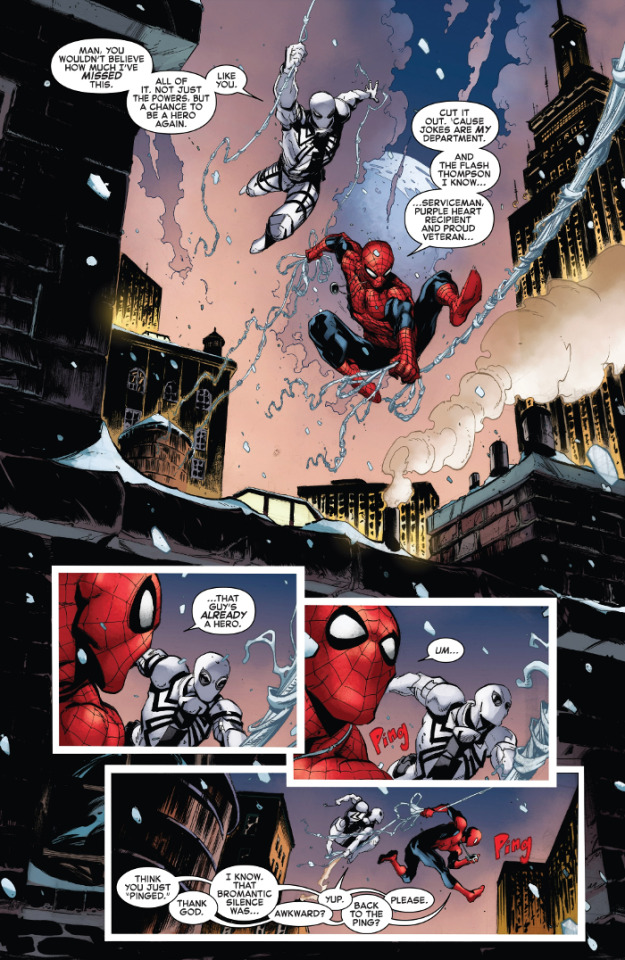

Animosity #11 gets into some of the divisions that have occurred following the Wake, some of the different groupings and reactions to animals other than humans gaining a spoken voice, and illustrates what animals will find acceptable in propagating their own survival. In this case the subjugation of bees, because they can’t be heard, because they’re little.
| Published by AfterShock

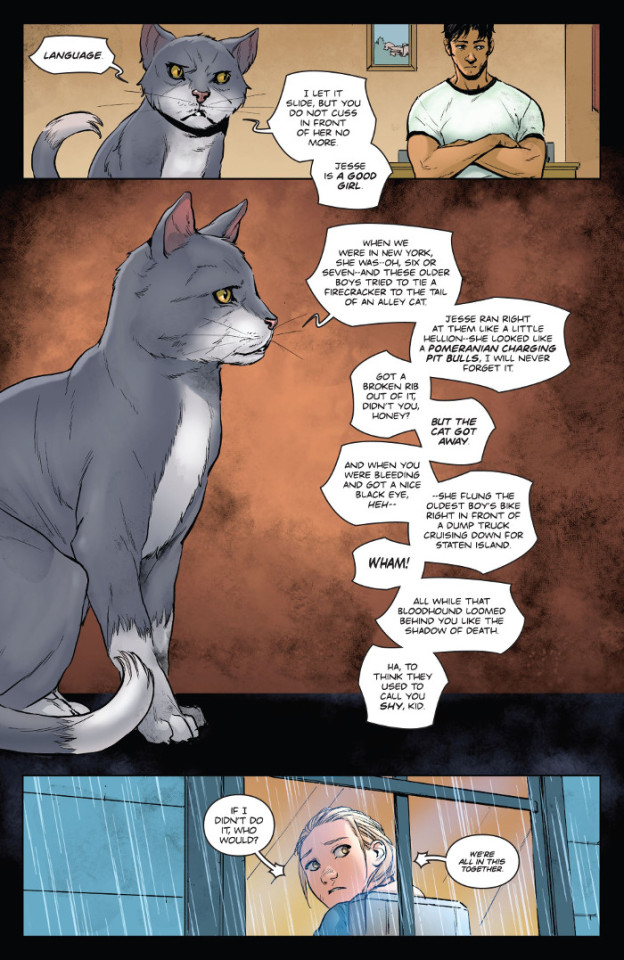

The Archies #3 throws some more kindling on the fire for the troubles of the band, both figuratively and literally.
| Published by Archie Comics

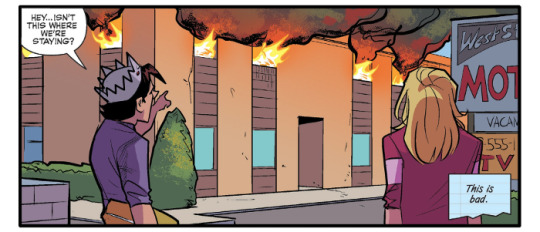

Astonisher #3 is interesting in that just as it looks like Magnus is finally getting the hang of the superheroics, dedicating himself to something more than just his own self-interest, a huge monkey wrench is thrown in his way. Other than just the red worm infecting those affected by the meteorite, there seems to be another insidiousness in the title. Alex de Campi is doing some great work here, both with plot and character.
| Published by Lion Forge / Catalyst Prime



Black Panther: Long Live the King #1 is a digital first comic from Nnedi Okorafor and André Lima Araújo and it’s wonderful. Okorafor sets up an interesting mystery amidst what could be a natural disaster, could be something more, as Wakanda’s capital is struck by an earthquake. T’Challa sees a Lovecraftian monstrosity during the quake, but he seems to be the only one, leading others to question his leadership. Aided by Chris O’Halloran’s colours, Araújo’s artwork is just the icing on top.
| Published by Marvel



Bloodshot Salvation #4 is a flashback issue spotlighting the trouble childhood of Project Omen’s director, the Scarred Man, and his brother, the man who will become Rampage. This issue is wholly illustrated by Mico Suayan, with Diego Rodriguez, and it’s as beautiful as the story itself is troubling.
| Published by Valiant

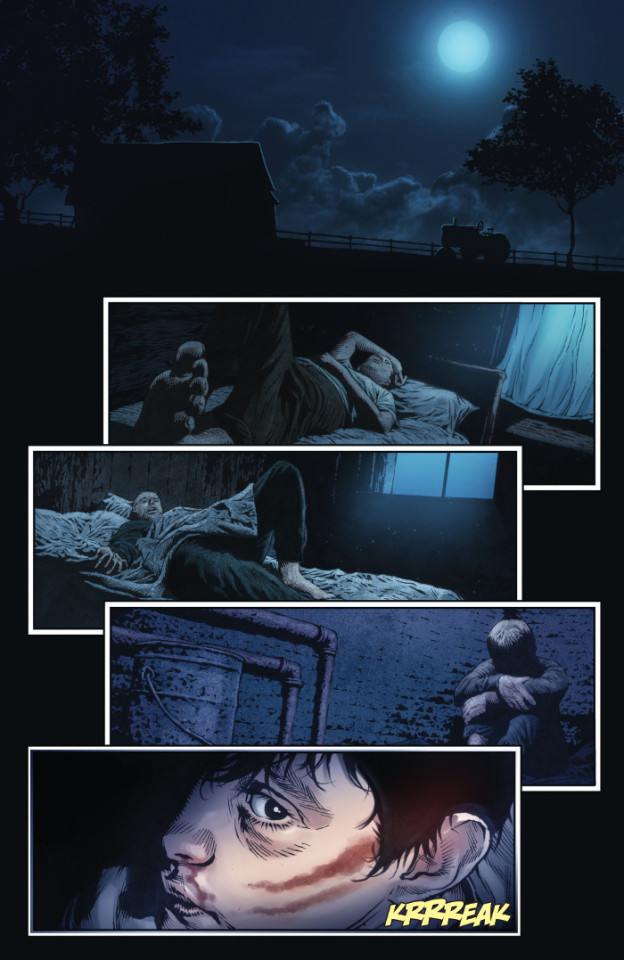

Brilliant Trash #2 takes us a bit deeper into the world of genetically modified superbeings, mixed a bit with social media and political activism, but not too far. We get glimpses of both sides in this battle, introducing us to more of the players, but we’re still left wondering what’s actually going on.
| Published by AfterShock



Coyotes #2 delivers on the promise of the first issue, following it up with more compelling storytelling, delving deeper into the mythology of the coyotes, where they’re likely coming from, the Victorias, and Red’s family. Sean Lewis and Caitlin Yarsky have something amazing here, with some strong world-building, fascinating characters, and stunning artwork.
| Published by Image

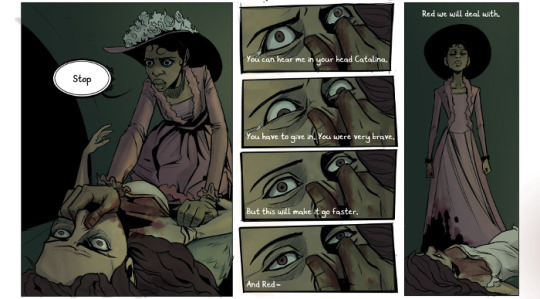

The Damned #6 begins a new old story-arc, reprinting the Prodigal Sons arc from the second mini-series, now with colours by Bill Crabtree. I think it’s still worth it for the colour if you’ve already read the originals.
| Published by Oni Press

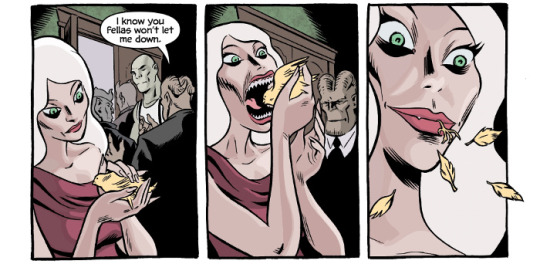

Giants #1 is a fairly impressive debut from Carlos and Miguel Valderrama. It takes place in a post-apocalyptic world where kaiju rule the surface of the Earth and humans have taken to the underground, forming gangs to survive. Gogi and Zedo are two kids trying to join the Bloodwolves, serving as our entrance point to this world and giving the book a bit of heart.
| Published by Dark Horse

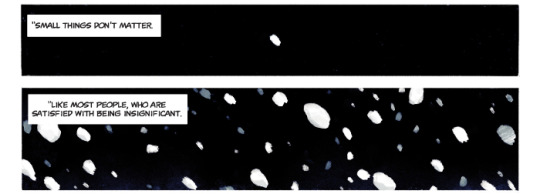

Grass Kings #10 switches to Maria’s perspective this time as she and Shelly discuss what’s been going on in the investigation into Jen Handel’s death, deciding that it’s time to confront Archie in what he knows. Once again, I’m highly impressed by how Matt Kindt is telling this story, as a mix of Robert Altman and Geoffrey Chaucer, using an ensemble mosaic to propel the narrative.
| Published by BOOM! Studios

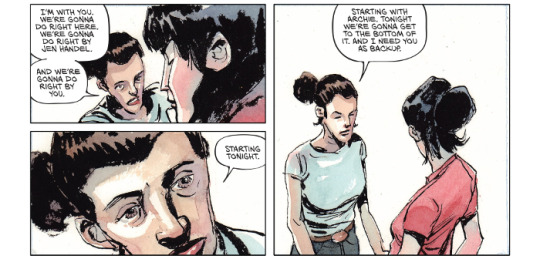

Harrow County #28 features Emmy versus Kammi for all the marbles, with an ending that you don’t necessarily see coming, which is going to leave you questioning what Cullen Bunn has just done to us.
| Published by Dark Horse



Judas #1 is one of the most beautiful looking books this month thanks to the stunning artwork by Jakub Rebelka. His art was one of the highlights of Namesake and now he’s elevating this series. I particularly like the black halo following Judas’ death, it’s just a little touch that adds a lot. The story itself by Jeff Loveness is also interesting, giving a kind of bleak, existential crisis from the point of view of Judas Iscariot, trying to figure out his afterlife and how he fit into the story of Jesus’ death.
| Published by BOOM! Studios



Jughead: The Hunger #2 nicely expands upon the factions, adding new players and family members to broaden the story, just as Jughead is recognized by a store clerk, drawing down upon himself the police. Frank Tieri’s setting up the pieces for what should be an interesting confrontation between the Coopers and Jughead.
| Published by Archie Comics / Archie’s Madhouse Presents

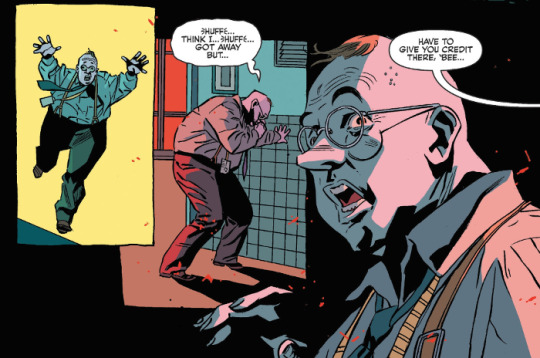

Kid Lobotomy #3 starts getting to the root of Kid’s metamorphosis and Kafka obsession, while unearthing some of the skeletons of Big Daddy and the Suites’ closets. All through Peter Milligan’s nutty story, Tess Fowler’s art brings it to life wonderfully.
| Published by IDW / Black Crown



Maestros #3 gives Will and the world a giant pile of crap as Rygol and Mardok join forces to destroy his capital and kill his people. Just when we thought Steve Skroce’s mad fantasy story couldn’t get stranger, it does.
| Published by Image

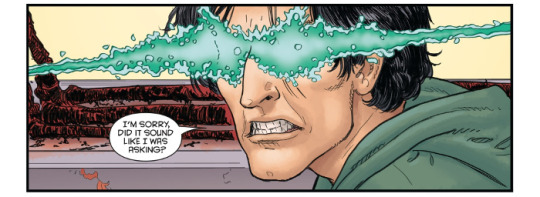

Monstro Mechanica #1 is off to a good start. The premise of Leonardo building a robot is interesting, as is his assistant, Isabel, allowing it to learn and grow despite Leonardo’s instructions otherwise, but it’s the political intrigue that’s really going to hook you. Along with the art, Chris Evenhuis has a clean, smooth style that really suits the subject matter.
| Published by AfterShock

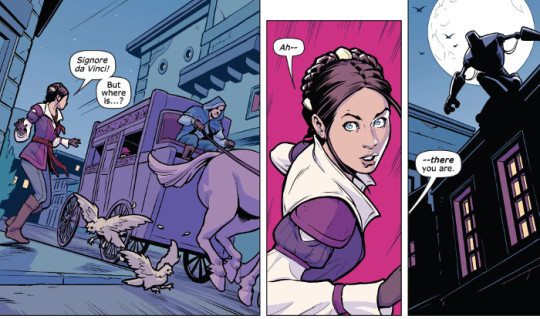

Port of Earth #2 gets into the implications that the corporations signed the deal with the aliens and sold out the Earth on the basis of sheer greed. It’s not far-fetched, given the current political climate, but there’s also a hint that the port was going to happen anyway, the deal being the only thing that kept humans alive. The bulk of this issue, though, deals with our POV ESA security agents continuing to chase down the rogue alien “visitor”. From it, it appears that there’s a broader scheme hatching.
| Published by Image / Top Cow



Retcon #4...so...aliens. And we’re done.
| Published by Image



Rumble #1 is something I’ve been looking forward to since John Arcudi announced that James Harren was leaving the title and David Rubín was taking over. I absolutely loved the team of Arcudi and Harren, and they really made the first volume of Rumble something unique, but Rubín is probably my favourite new-ish artist to begin working in the North American market in recent years. His art and style is just stunning and fresh, making every character and scene he illustrates something interesting. And he does not disappoint in this first issue.
Arcudi’s humour and quirks, the monstrous and odd characters, the setting, all perfectly mesh with Rubín‘s artwork creating something special. There is a recap of sorts for new readers, albeit biased, so you need not have read the first volume. I still recommend reading it though.
| Published by Image



Runaways #4 is actually a nice moment of respite for the reunited youngsters, as they get introduced to Molly’s grandmother and actually get to relax and be safe for an afternoon. I suspect that the revelation of what Molly’s grandmother has been up to, what they’ve been hinting at since the first issue, is going to be nefarious, but still...somewhat happy issue. Plus, Kris Anka draws some of the best cats.
| Published by Marvel



Slots #3 gives us Stanley’s first fight, as well as giving a look at how Les is an asshole to his “friends”.
| Published by Image / Skybound

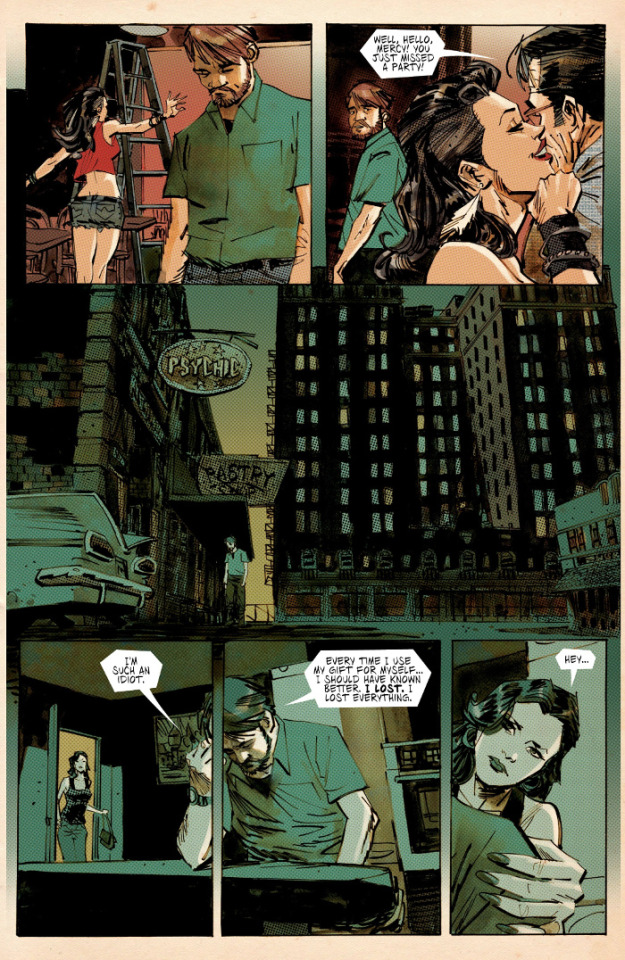

Star Wars #40 shows some cracks appearing in the alliance between the Rebels and the remnants of Saw Gerrera’s extremists on Jedha, as Benthic takes a particularly lethal approach to defending what remains of the planet. The artwork this issue, from Salvador Larroca with colours by Guru e-FX, is very impressive.
| Published by Marvel



Other Highlights: Aliens: Dead Orbit #4, All-New Wolverine #28, Ben Reilly: Scarlet Spider #11, Cable #152, Daredevil #596, Dept. H #21, The Despicable Deadpool #290, DuckTales #4, Falcon #3, Gravetrancers #1, Hack/Slash vs. Vampirella #3, Invader Zim #26, Jean Grey #10, Jenny Finn #2, Killer Instinct #3, Punisher #219, Royal City #8, Royals #12, Secret Warriors #10, She-Hulk #160, Sheena: Queen of the Jungle #4, Slam!: The Next Jam #4, Superb #5, The Unbeatable Squirrel Girl #27, Weapon X #12, The Wicked & The Divine Christmas Annual, X-Men Blue #17
Recommended Collections: Amazing Spider-Man: The Clone Conspiracy, Bitch Planet: Triple Feature, Brave Chef Brianna, The Defenders - Volume 1: Diamonds are Forever, Faith and the Future Force, Kim & Kim - Volume 2: Love is a Battlefield, Lady Killer - Volume 2, Lobster Johnson - Volume 5: Pirate’s Ghost, Misfit City - Volume 1, Motor Girl - Volume 2: No Man Left Behind, Peter Parker: The Spectacular Spider-Man - Volume 1: Into Twilight, Rocket: Blue River Score, Star Trek: Boldly Go - Volume 2, There’s Nothing There

d. emerson eddy understands the mysterious nature of the Schwartz. No, he will not teach you.
7 notes
·
View notes
Text
Marvelous Mrs. Maisel' Creators Talk Long-Term Plan, Amazon Turnover and More 'Gilmore Girls'
Almost a year after the launch of Netflix's Gilmore Girls revival, series creators-writers-directors-producers Amy Sherman-Palladino and Daniel Palladino are back with a new original series. Like Gilmore (and the beloved Bunheads), the husband-and-wife team have again crafted a light, quick-witted hourlong show centered on a fast-talking, whip-smart female protagonist. However, that's where the comparisons end.
The Marvelous Mrs. Maisel, premiering Nov. 29 on Amazon, is set in 1958 in New York City, a few hundred miles from the confines of Stars Hollow. The series centers on Miriam "Midge" Maisel (House of Cards' Rachel Brosnahan), a married mother of two whose life is turned upside down when her husband leaves her and she suddenly discovers a hidden talent for stand-up comedy. As she navigates her suddenly tumultuous personal life, Midge also navigates her way through the stand-up comedy world, a path that will ultimately take her to Johnny Carson's couch.
Maisel marks just the beginning of the Palladinos' relationship with Amazon. The series earned a rare two-season pickup in April and the duo signed an overall deal there in September. The latter comes in the midst of major turnover at Amazon, which saw top-level execs, including studio chief Roy Price and head of comedy and drama Joe Lewis, exit under less-than-ideal circumstances as the studio sets its sights on finding the next Game of Thrones.
Ahead of the series premiere, THR spoke with the braintrusts behind Maisel about going back in time, their experience thus far at Amazon, the "tough" process to find their lead and, of course, the prospect of more Gilmore Girls.
How did the idea for the show come about?
Amy Sherman-Palladino: My father was a stand-up comic so I grew up with a lot of comics sitting around our backyard eating deli and talking about the Catskills and talking about Greenwich Village and touring and sharing anecdotes and trying to make each other laugh. So that premise just stuck in my weird DNA.
Dan Palladino: And all those guys of her father's age were all starting out in the late '50s.
Sherman-Palladino: I think it scared me perhaps in an advantageous way. When I was talking to Amazon about doing something with them, I thought that would be a good venue to do on Amazon: a woman in the late '50s who gets sucked into that world and suddenly finds a voice and a talent and ambition that she had never known was there. And we could shoot it in New York so I could live in New York and wake up in New York and live in New York and work in New York.
This is your first period project. Most of the other things you've worked on are set in the present so what were the biggest challenges that came with that?
Palladino: It seemed like the perfect time to place her because there was a real sea change coming in comedy with Lenny Bruce and people like that that were not telling pre-written stand-up jokes. They were sometimes discussing things just off the tops of their heads.
Sherman-Palladino: A lot of stream of consciousness.
Palladino: Or they were talking about current events, which was edgier at the time. Those guys, Lenny Bruce especially, led to George Carlin and Joan Rivers and they led to Sarah Silverman and Jerry Seinfeld and all of that crew so it just seemed like an interesting time for her to dive in. She doesn't look like a woman who would go into comedy. We explore how people react to how she looks and her pursuing comedy at that time in other episodes. It just felt like the perfect year to start following a woman just boldly going into this really, really impossible business.
Sherman-Palladino: Plus, we wanted to do something with some scope. We wanted to do something that had a lot of visual places to explore and 1958 New York, especially re-creating that in modern New York, is both tragically impossible and hard, and very rewarding and exciting. We have this unbelievable crew of people working with us who have made it possible so it just felt like let's go for something that has a great visual theme to it also.
What drew you to Amazon? How did those conversations begin about working with them on something?
Sherman-Palladino: We had a really great relationship with Netflix on the Gilmore movies and we were pretty decided at that moment that the streaming world was our new permanent home forever if we ever worked again. Just because they were people that spoke our language. I sat down with [Amazon Studios head of current hour] Marc Resteghini, and he just was a guy who listened and understood and they felt like a company that was looking to do different stories. When I first was at Warner Bros. when dinosaurs were on the Earth and pitched Gilmore, The WB [the network that evolved into The CW] prided themselves as being the network that encouraged voices because they had Joss Whedon and J.J. Abrams. Sitting with the Amazon guys felt like even a broader version of that. They want those different experiences and those different characters and those different voices out there and they felt like people that would not be terrified of us and find us annoying problem children, but actually find our independent style a little delightful. So far, they are either lying or they actually do find us delightful. Either way, I'll take it. I don't need honesty, I just need to do my thing.
What were the specific points that made streaming so compelling as compared to cable or pay cable or broadcast?
Palladino: The main thing is once you got away from, especially the four-network model and even the cable model, there's just room for a lot of different kinds of characters, a lot of different kinds of voices. We've been in this business a long time. When we started at broadcast networks, you pitch a strong woman character and you see men in the room get very nervous about a strong woman character because often they worry that if the woman is strong, she's not going to be likable. Now you pitch a Midge Maisel, there's no nervousness, there's no question about that. That's actually a pretty big sea change. It's fantastic that that's happened. That's a result of having so many outlets that there's a less uniform business model sort of guiding everybody in their choices. Because that's how you end up with the same cop show, the same medical show over and over and over and over again.
Sherman-Palladino: The other thing about Amazon and Netflix and streaming services is because they want everybody there, they want everybody at the table, they are going to be open to a lot more. You go to some places and they say, "This is what we do. We are this so it has to fit it into our tiny little hole." There is no tiny little hole at Amazon or Netflix, the sky's the limit. That's really important when you're people like us who have very strong opinions about your work and what you want to do and aren't interested in having to explain why you made those music choices. There's a trust level in terms of who you are and your body of work that you don't get at a network. They simply don't have the trust that you're not going to completely screw 'em over and waste their money. For some reason, there's no trust. It doesn't matter who you are or what your background is. You're all the same, you're all failures until you've proved differently as far as they're concerned.
Amazon had so much trust in you they gave the show a rare two-season pickup. How did that impact you in terms of writing and planning for the show's long-term future?
Palladino: It really helped us because we could tell specific crew because we were trying to get the best crew available.
Sherman-Palladino: You got a job next year, kid!
Palladino: It didn't affect the longer-term plan because if you go into any series, we're big believers that you should be able to see years down the line and a lot of writers actually don't do that. They come up with thoughts and they actually don't know what's coming.
Given how the serialized the show is and you actually put in the series descriptor, this show is going to show her from discovering her talent to Johnny Carson's couch, how long do you see the show running?
Sherman-Palladino: Thirty-five years.
Palladino: And when we say Johnny Carson's couch, we mean the couch on set. With everything going on right now, we have to be clear.
Sherman-Palladino: In this day and age, it can mean something else completely.
Palladino: It's the one on his set that's on camera. We're not hiding the fact that this is going to be a journey of success. It's the journey that we think is going to be interesting for the audience.
Sherman-Palladino: But her personal journey is really what the show is about and so it's not really a spoiler to say, "Oh, by the way she's going to be famous or she's going to be successful." This show is really about how her shifting dynamic affects her family, her husband. It's really about all of those personal dynamics.
Do you have a number of seasons plotted out?
Sherman-Palladino: I think we know what our trajectory is for the first four to five seasons. And then I just want to see if I’m still breathing at that point. If I am, then we’ll continue or Dan and his new wife will continue!
So much of this series hinges on the title role. How did you find your Mrs. Maisel? How long was that search and what did that entail?
Sherman-Palladino: It entailed a lot of really good actresses coming in and reading for it, which we are very grateful for. It was tough. It was a lot. It's a tough part. And the toughest thing was we knew we were probably going to have to get an actress who was not a comic, which is what we got, and whose comedy had to be story so that they would have something to latch onto because comedy is its own animal. Great comics, they take years and years and years to hone that persona and those jokes and the timing and we wanted to be able to show the audience in the pilot when Midge goes up on stage that she has the potential of being something really great. We didn't want to just tell the audience that, we wanted them to see it. We needed to find that one-in-a-million girl. Rachel came in and we had been told by our L.A. casting director, Jeanie Bacharach, there's nothing on paper that says that she could remotely do that because she was mostly drama but she just felt like Rachel was special enough that she would be able to be our girl. She came in and she read and we worked with her and we talked and by the time that she left, it was very apparent that she was it. She came, she saw, she conquered.
When you were meeting with these actresses, did you actually have them read jokes or do stand-up to see how they would be in that context?
Sherman-Palladino: We had them do the stand-up scene.
Palladino: Every actress came in and every actress was off-book. They had memorized the scene and they came in to do the stand-up and it was me yelling, like the audience would, back to them and kind of applauding and trying to give them energy. It was really tough.
Sherman-Palladino: It was very grueling for Dan. It was exhausting.
Palladino: It was terrible. You should do a whole separate article on how grueling the process was for me. But really, they just came in and did it and it's a high-wire act to do that in a casting session. Rachel knew how to approach it from a character's point even though she was never dumb enough to try stand-up.
You signed an overall deal with Amazon, but before that there was speculation about more installments of Gilmore Girls given its success on Netflix. Right now, where do you stand on the future of Gilmore Girls and your interest in doing more episodes?
Sherman-Palladino: We've got the Gilmore clause, we've carved it out. (Laughs.) The thing about Gilmore Girls is, it's an amorphous thing. The reason that it happened the first time is because we all went to that Austin [ATX] Festival and we all sat together and there was an open bar and we were all sitting there saying, "It feels good now, let's do it now." I think it would have to be a similar situation. There would have to be an open bar and we would have to have the right story and the right format and it would have to be a time where the girls and us all felt like, 'Yeah, let's dive in again.' There's nothing being planned right now but it's open if the muse strikes.
There's recently been a lot of executive changes at Amazon. Now that you have an overall deal, how concerned are you about going forward at the studio? How are you feeling about Amazon given those recent exits?
Sherman-Palladino: Our guys at Amazon are Marc Resteghini and Ken Lipman, and they're still there. They're good guys. Our people have been very constant.
Palladino: What’s kind of cool about how our brief time so far has been at Amazon is, at this point, we're kind of like independent filmmakers or independent TV makers on our own. They know that the deal is: here's what we're going to try to do. Let us do it to the best of our ability, meaning like don't throw a lot of different things at us. Take it or leave it as is, and let us do our thing and they were amazing on that with Maisel. We gave them what we promised…
Sherman-Palladino: …And they did what they promised.
Palladino: We're still independent producers within the Amazon realm and we're happy there because we need cameras, we need financing, we need an office, we need a home, and they're happily providing all of that. It's been good and we're looking forward to a really great relationship with them. Learn To Ask Questions For Girls.
0 notes
Text
'Star Trek: Discovery': Rainn Wilson on playing the mischievous Harry Mudd
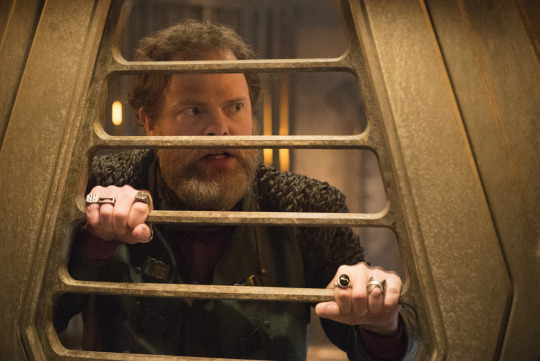
Rainn Wilson as Harry Mudd in Star Trek: Discovery (Photo: Michael Gibson/CBS)
When he hosted the Star Trek: Discovery panel at San Diego Comic-Con this past summer, Rainn Wilson made it absolutely clear where he stood on the Star Trek vs. Star Wars debate. “Well, Star Trek is just better,” he told the assembled crowd. Granted, the former star of The Office is a bit biased considering the fact that he’s now officially part of the Star Trek universe. But as he tells Yahoo Entertainment, he earned his Trekkie cred well before being cast as a (slightly) younger version of Harry Mudd, the intergalactic rogue that Captain Kirk and the Enterprise crew originally encountered in two episodes of The Original Series. “My family would watch all the re-runs all the time in the ’70s, so I was probably 6 or 7 years old when I saw my first episode of Star Trek. And I probably saw Harry Mudd right around that time!”
Flash-forward to 2017 and Wilson is exploring the final frontier as Mudd in a pair of Discovery episodes. He made his debut in the fifth installment, encountering Discovery captain Gabriel Lorca (Jason Isaacs) in a Klingon prison. When Lorca staged a jailbreak, he rescued the mysterious Ash Tyler (Shazad Latif), but pointedly left Harry behind due to the fact that his cellmate was spying on him. On this week’s episode, “Magic to Make the Sanest Man Go Mad,” Mudd makes his grand re-entrance… and he’s none too happy about how Lorca treated him. We spoke with Wilson about how he devised his own take on a fan-favorite Star Trek character and when we’ll learn the origin of Harry Mudd’s fabulous mustache.
So this sounds like a dream role for you! Absolutely. Actors are always like, “This is a dream role for me,” and that’s become kind of a cliché. They’re doing some dumb show no one watches and are like, “It’s a dream role for me to play the dishwasher on the new action-adventure show, Chicago Pizza, on NBC.” [Laughs.] But I grew up watching Star Trek, so when they were doing this new Star Trek show, I had my agents call them up and beg for a meeting. They didn’t have anything for me, but I asked them to keep me in mind and months later the phone rang and they talked to me about Harry Mudd. I thought the combination of the dastardly rapscallion and the theatrically comedic was a perfect fit for me. So it really was a dream come true.
How closely did you model your performance after your predecessor, Roger C. Carmel? I had been lucky in that Dwight from The Office had the great Mackenzie Crook doing his version with Gareth, so I got to steal the best bits and make the other stuff my own. It’s the same with Roger Carmel, and his combination of the theatrical, the mischievous, and also the deadly. I wanted to accentuate that, and thought about how much fun I could have and how deadly I could be at the same time. That was really interesting, bumping up against the different colors of a character.
youtube
When I spoke with James Frain about playing Sarek, he talked about how he wanted to show how the character ends up becoming the one we remember from The Original Series. What was your mental image of a pre-TOS Mudd? There’s not a whole lot about Harry from The Original Series. I went back and watched his episodes, as well as the episode of The Animated Series. I think the Discovery writers did a great job fleshing out his backstory. The idea that he’s pursuing Stella and purchased a moon for her, and that she’s got a powerful dad he can never please. Also the idea that he’s got resentment for the Federation; he thinks their whole mission is ridiculous, the idea of boldly going where no one has ever gone before. Of course you’re going to end up in war if you do that! You’re going to end up bumping into a species that doesn’t want you on their front lawn. Of course, you don’t know how much of it is true, because he could be making up the whole damn thing!
Did you want to suggest how this experience informs the Mudd we meet later on in “Mudd’s Women”? You can’t link it completely because it doesn’t quite add up. When you look at “Mudd’s Women,” he’s had some interaction with the Federation before, but he’s a very low-level merchant trader. So it doesn’t quite add up exactly chronologically. But that’s OK — it’s the spirit of Mudd that’s the important thing. The Original Series had these really broad comedic episodes, so my larger mission was to be part of the great Star Trek tradition where these larger-than-life characters would be splattered into occasional episodes.
How do you feel about Discovery‘s darker tone in contrast to The Original Series? I think it’s a bold move. In today’s TV environment, you can’t really make a Star Trek show without the action element that J.J. Abrams brought to the movies. You can’t have an episode where they’re like, “Look here’s a planet! I wonder if there are Dilithium Crystals on that planet? Let’s go down and see! Oh, there’s a talking tree and a bunch of children running around by a brook. That seems mysterious, I wonder what’s going on?” You can’t do that kind of Twilight Zone-esque Star Trek episode; it’s not going to sustain for the audience. You have to be true to the original Trek and Gene Roddenberry’s vision, but also modernize it. I think the idea of a war with the Klingons — the darkness of it, and the action sequences it allows — gives the series a propulsion it otherwise wouldn’t have. Personally, I’m a fan of the episodes where the crew lands on a planet and there’s a reading they get from a rock that unravels this whole mystery. But I don’t know if those episodes can work now.
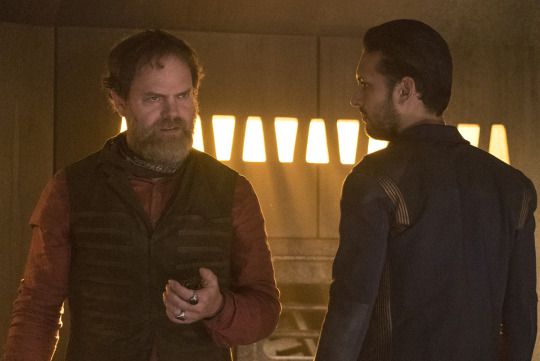
Rainn Wilson as Harry Mudd and Shazad Latif as Lieutenant Ash Tyler in Star Trek: Discovery (Photo: Michael Gibson/CBS)
Can you tease how Mudd will make his return on this week’s episode? Well, at the end of the fifth episode, he was abandoned in the Klingon jail by Lorca, which I think was a pretty sh*tty move! Lorca absolutely should have taken Mudd with him; that goes completely against Starfleet protocol. He should’ve taken him with him and put him on trial for abetting an enemy or something like that. So Harry is pretty pissed off and he gets onboard the Discovery and sh*t is about to get cray-cray. I will say that I do get to fire a phaser, use the transporter, and sit in the captain’s chair. So talk about an actor’s dream coming true!
It sounds like we’ll be seeing a more vengeance-minded Harry than we’re accustomed to. Do you still bring some comic notes to it? It’s definitely another color from Mudd than we’ve seen before. Though he was pretty dastardly in “I, Mudd” — wanting to trap the Enterprise crew on the planet with the androids. So we’ve seen him be dastardly, but this is much more of a straight-up revenge episode. I give all the credit to the writers for writing in most of the comedy. I do try to bring extra elements — physicality and other things. But I didn’t improvise so much on this show. It didn’t feel right to improvise on Star Trek!
When are we going to see the origin story of Mudd’s famous mustache? I had the idea for the beard. I told them that if I let the mustache grow and be part of a beard, it would be a little less like Dwight from The Office [in space]. But Discovery has gotten picked up for a second season, so I think that’s what we need for Season 2, episode 7. It’s just called “Mustache” and it shows Harry Mudd shaving off the beard. We’ve gotta do that! It’s the origin story the world has been clamoring for. [Laughs.]
Star Trek: Discovery airs Sundays at 8:30 p.m. on CBS All Access.
yahoo
Read more from Yahoo Entertainment: Review: ‘Stranger Things’ is better than ever in Season 2 Saturday morning scares: Animation writer Buzz Dixon on the art of creeping out kiddos #TBT: Celebrity Halloween costumes 2016
#rainn wilson#_revsp:wp.yahoo.tv.us#drama#_uuid:4ef5ae45-9ea3-32a8-bb2a-66b5f248e7b1#cbs#star trek#_author:Ethan Alter#_category:yct:001000086#_lmsid:a0Vd000000AE7lXEAT#interviews#star trek discovery
1 note
·
View note